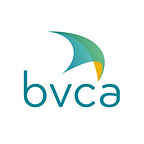Investment Committees are an extremely important component of any venture capital or private equity firm’s decision-making process yet there has been very little written about them. This year the BVCA Venture Capital Committee conducted a survey of over 100 investment professionals to get a better understanding of how they actually work and where they might be improved.
The results of this survey form the basis of a new study the BVCA published this month, its aim being to demystify the role of the Investment Committee (IC) and shine a light into its mechanics. The good news is that there is no magic formula. Neither fund manager nor their investors have developed a perfect model that fits all firms. They are generally thought to be useful forums to focus discussion around a single topic and to draw on the depth of knowledge and experience of the IC members.
So you are probably already doing a lot of things right. But it is clear that some firms have thought about it hard. Others have had to adapt to address their strategy, approach or personalities.
Investment managers spend a lot of time preparing for or attending IC meetings. Every hour is likely to be one of the most expensive activities that goes on in the firm. And we have all seen what a bad meeting looks like.
Our study, part of which is presented below, found 10 benchmarks, 10 findings and gives 12 ideas to consider on how to improve Investment Committees — these are not so much recommendations as potential innovations that we hope will, at the very least, stimulate thinking and discussion at your firm and the wider investment community.
Benchmarking the IC — the basics
1. VC decisions are usually made in two meetings, more for buyouts/late stage
2. Typical IC has four to six members but can be three to 10 (more in larger funds)
3. Around 80% of IC meetings are held before issuing term sheets
4. 76% of firms operate consensus decision-making or voting
5. Less than 10% use a scoring system — most vote ‘yes’ or ‘no’
6. IC documents are usually in Word (90%), but some use PowerPoint
7. Papers can be eight to 130 pages long — a huge range. Average is 32 pages
8. 22% of firms insist on management teams presenting to the IC
9. 100% of larger funds have a chair of the IC, but not all smaller funds do
10. Two IC meetings is typical, but several have more steps
What we kept hearing
1. Firms have a clearly documented process, but rarely is it perfect
2. Speed of process is an area of focus
3. Inclusive and open debate is good — IC is not a tick box
4. Papers are too often submitted late or at short notice
5. Many are trying to reduce length of the final paper
6. In person or via video leads to better discussion than via phone
7. Mixed success of using external committee members
8. Succession planning is an issue at several firms
9. Lobbying outside of IC is poorly regarded
10. Detailed minutes of meetings are an important record when looking back at exit
To read the full study, including our 12 innovations to consider to potentially improve how your IC operates, please visit the BVCA website here. Available to BVCA members only.
This would not have been possible without the hard work and support of several already busy people who made the time to design the research, collect data, interview over 100 investment professionals, contribute to the debate, share insights and keep smiling. Special thanks to:
Kerry Baldwin, IQ Capital
Chris Barnes, Atomico
Chris Elphick, Tim Hames and Noelle Buckley, BVCA
Sue Hunter, Frog Capital
Ross Morrison, Adam Street Partners
David Mott, Oxford Capital, and Chair, BVCA Venture Capital Committee
